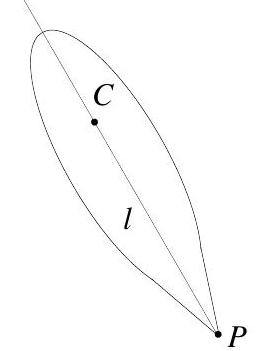Paper 4, Section I, A
Part II, 2014
Consider a heavy symmetric top of mass with principal moments of inertia , and , where . The top is pinned at point , which is at a distance from the centre of mass, , as shown in the figure.

Its angular velocity in a body frame is given by
where and are the Euler angles.
(a) Assuming that , are chosen to be the principal axes, write down the Lagrangian of the top in terms of and the principal moments of inertia. Hence find the Lagrangian in terms of the Euler angles.
(b) Find all conserved quantities. Show that , the spin of the top, is constant.
(c) By eliminating and , derive a second-order differential equation for .